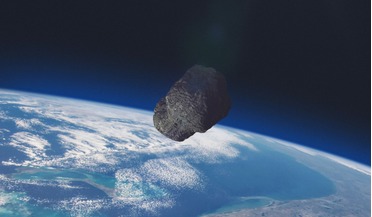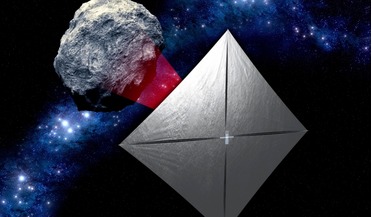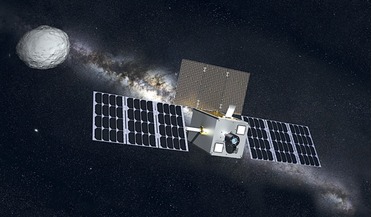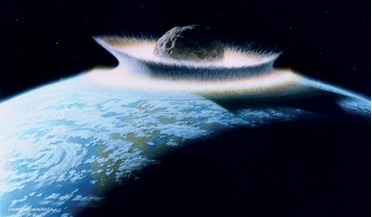 11 October 2021
Disrupting Earth-bound asteroids with nukes is “very effective”, new study says
11 October 2021
Disrupting Earth-bound asteroids with nukes is “very effective”, new study says
... was able to reduce the fraction of impacting mass by factor of 1,000 or more (99.9 percent of the mass misses Earth). For a larger asteroid, more time is needed, say the team. Dispersal velocities could still be reduced by an order of magnitude and...
 September 2019
A new era in planetary defence missions
September 2019
A new era in planetary defence missions
... by the impact Didymos has spectral characteristics that place it in the class of the most common type of near-Earth asteroids: those composed of rocky and metallic grains found in ordinary chondrite meteorites. Demonstrating DART’s kinetic impactor...
 24 January 2022
Solar sail mission will intercept and study small asteroid
24 January 2022
Solar sail mission will intercept and study small asteroid
... spring, the sail will use solar radiation to propel the CubeSat to the asteroid, estimated to be ths size of a school bus. The target is 2020 GE, a near-Earth asteroid (NEA) that is less than 18 m in size, and the spacecraft will use its...
 July 2018
The rise of interplanetary CubeSats
July 2018
The rise of interplanetary CubeSats
...missions afoot to explore the Moon, Mars and near-Earth asteroids using CubeSats. These plans are led not just ...JPL, is a 6U CubeSat mission that will head to a near-Earth asteroid using cold-gas propulsion to perform imaging and spectroscopy. Three ...
 May 2020
Developing a commercial market for small sample return
May 2020
Developing a commercial market for small sample return
... vast resources of our solar system enable a ‘post-scarcity’ society. The Moon and various near-earth asteroids are rich in materials uncommon on Earth, such as helium-3, iridium, gold, platinum, and other precious metals. Extracting, processing, and...
 October 2015
From NEOs to real action: testing asteroid impact scenarios
October 2015
From NEOs to real action: testing asteroid impact scenarios
.... The specific hazard in this exercise involved another hypothetical near-Earth asteroid, designated 2015 PDC, which was predicted to pass very close to Earth on 3 September 2022. The asteroid was ‘discovered’ on 13 April 2015 and had been tracked...